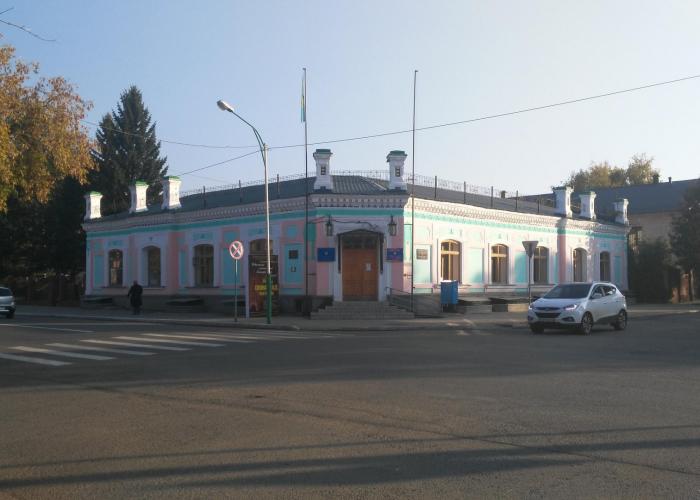The building was built during World War I in 1914.
Czech prisoners took part in the decoration of the facade, as evidenced by the historical texts on the medallions. In 1914 Russia was at war with the German and Austrian empires, but the prisoners were commonly referred to as Czechs. To the right and left of the central entrance is an inscription: "The building was built by captive Czechs." This is a modern inscription, the Czechs themselves wrote it in Latin, in Czech. The attitude to the prisoners was respectful, when they were buried, they put a monument to them. On the oldest cemetery in the city, the one in Ushanovskoe, a chapel was built, and a stele in memory of the prisoners of war was erected not far from it. These monuments are of international interest. People connected by the line of historical destiny with the Austrian Empire - Hungarians, Czechs, Austrians, come here. In our region there is the so-called Austrian road, in the area of Terekty (Alekseevka), on the Chinese border to Urunhayka, built also by the prisoners. The condition of the road is still excellent.
During the Soviet period, this building housed the Altai restaurant.
The peculiar building, brick, one-story, belongs to the early period of Art Nouveau style, which is characterized by a tendency of displacement of historical styles. It is drawn in traditional Renaissance motifs. In the presence of rationality, there are traits of superficial decorativeness in the composition. The building has a logical, clear and simple form. Manners and vegetative motifs are applied as decorative elements (preference is given to the climbing vines of grapes). The rounded windows at the top are topped by a flat image of currencies (borrowed from the rococo style). The grapevine speaks of one of the brightest features of Czech culture - viniculture. The corner part of the entrance, cut at 45˚ and intersecting with the adjoining façade is a remarkable feature.
Currently used as a showroom VKO Ethnographic Museum. From the original three entrance blocks only one remains which was in the corner section of the building. There are no serious architectural losses.

